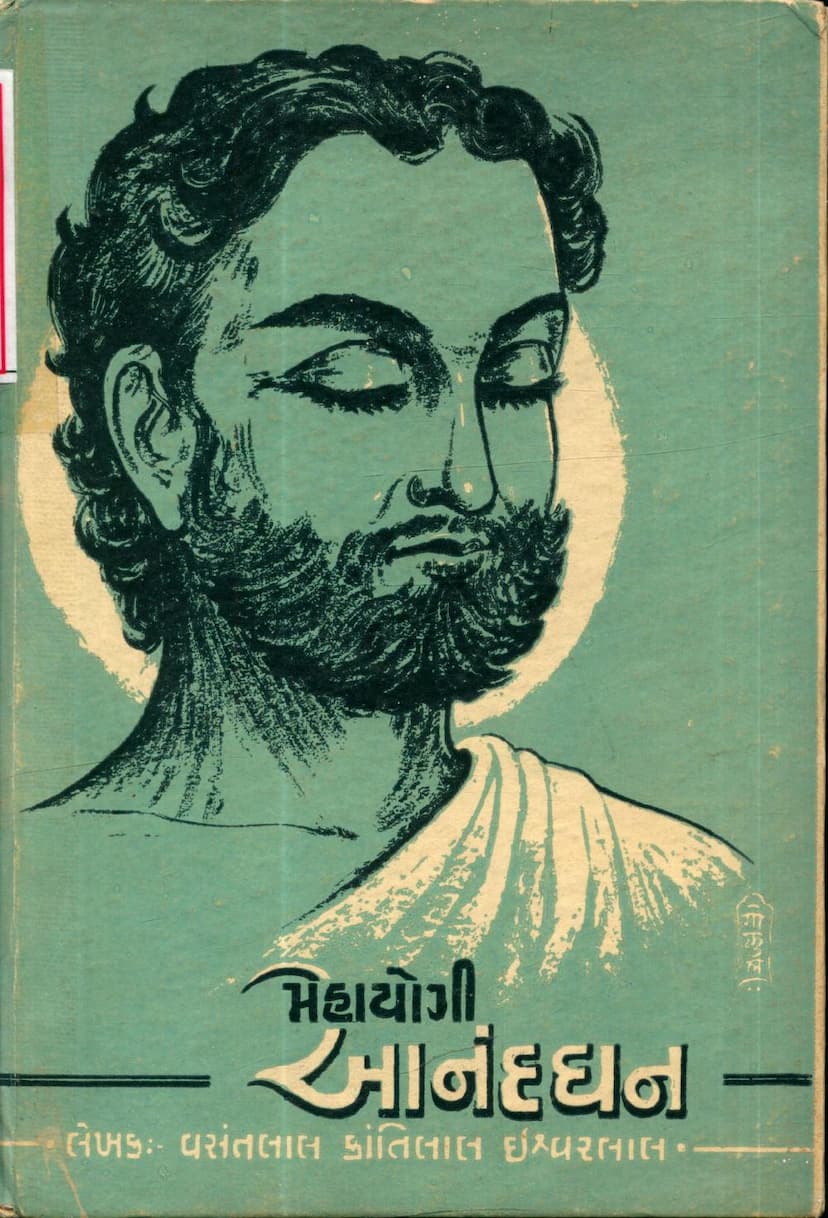Mahayogi Anandghan
Added to library: September 2, 2025

Summary
This document is a book titled "Mahayogi Anandghan" by Vasantlal Kantilal Ishwarlal, published by Jaswantlal Sankalchand. The catalog link provided is jainqq.org/explore/022911/1.
The book focuses on the life and philosophy of Anandghanji, a great yogi within the Jain tradition. The author expresses deep admiration for Anandghanji, considering him a prime necessity for the world today, more so than political leaders, scientists, poets, industrialists, or artists. Anandghanji is presented as a spiritual "ambassador" who can solve the world's problems of sorrow, misfortune, and poverty by bringing true wealth, inner strength, and divine bliss.
Key Themes and Content from the provided pages:
- Anandghanji's Significance: The author emphasizes that Anandghanji is not an ordinary leader or scholar but a spiritual guide whose presence brings immense happiness and inner power. He is seen as a solution to the modern world's anxieties and a source of true wealth.
- Anandghanji's Sadhana (Spiritual Practice): Anandghanji's spiritual path is described as one of intense love and devotion, characterized by tears shed in separation from the divine ("Pritam"). His tears are portrayed as his penance, worship, prayer, and meditation. His devotion is not based on external rituals but on a deep, internal yearning.
- The Nature of "Anubhav" (Experience): A central concept in Anandghanji's teachings, as highlighted in the text, is "Anubhav," which means complete immersion of consciousness into the Supreme Consciousness. This experience involves not just perception but also touch, immersion, and oneness with the divine.
- Anandghanji's Love for Rishabhdev: Anandghanji's love for Rishabhdev (the first Tirthankar) is depicted as an all-consuming passion, so intense that he could not live without this connection. His profound longing for Rishabhdev is described as a force that even nature responded to.
- The Union with the Divine: The text describes Anandghanji's eventual union with the divine as a culmination of his intense longing and love. This union is portrayed as a merging where the individual self dissolves into the divine essence.
- Anandghanji's Life and Teachings: The book aims to introduce Anandghanji's life, emphasizing his spiritual wealth over material wealth. His teachings focus on realizing true wealth, which is not based on possessions but on inner spiritual attainment.
- Historical Context: While detailed historical information (birth date, parents) is scarce, the book places Anandghanji in the 18th century, noting his initial name in monastic life as Labhananda and his association with the Tapgachiya sect.
- Anandghanji's Poetry: His poetry, described as having a profound spiritual depth, is a way to understand his experience and devotion. The complexity of his language and his direct experience of the divine make his works difficult for ordinary people to fully grasp without deeper contemplation or commentary.
- The Importance of Love in Sadhana: The book stresses that true spiritual progress comes from falling in love with the divine. Without this love, knowledge and rituals remain dry and ineffective.
- Anandghanji's "Death" as a Celebration: His passing is not seen as an end but a celebration of his liberated soul, merging with the divine. His state of bliss is described as "ghan" (solid, dense) rather than fleeting.
- Anandghanji's Impact: The author posits that Anandghanji's teachings offer a spiritual "ambassador" for the atomic age, bringing peace and prosperity.
- Commentaries on Anandghanji's Works: The text mentions that scholars like Gyanvimal Suri have written commentaries on Anandghanji's works, helping to decipher their profound meanings.
- The Nature of Truth and Understanding: The book delves into the idea that understanding of truth and spiritual figures like Anandghanji is subjective and depends on the individual's perspective and inner development.
- The Essence of Sadhana: The book emphasizes that true sadhana is not about external rituals or intellectual understanding but about internal transformation driven by love and a deep longing for the divine. It highlights the journey from the initial stages of separation and longing to eventual union and spiritual realization.
- Anandghanji's Legacy: The book seems to be an exploration and celebration of Anandghanji's spiritual journey, aiming to inspire readers to seek a similar path of devotion and self-realization.
- Specific Life Incidents: The text recounts several anecdotes:
- The Queen's Request: A queen seeks Anandghanji's help to gain her husband's attention. Anandghanji's response, a simple note stating his indifference to worldly relationships, highlights his detachment.
- The Alchemist's Gift: Anandghanji is offered a potion that can turn stones into gold. He rejects it, demonstrating his understanding of true wealth as spiritual experience, not material riches.
- Meeting with Upadhyay Yashovijayji: A renowned scholar, Upadhyay Yashovijayji, encounters Anandghanji, initially mistaking him for a simple sadhu. Anandghanji's profound spiritual discourse on a verse leaves the scholar in awe, recognizing him as a great yogi.
- Anandghanji's Illness and Detachment: An anecdote illustrates Anandghanji's detachment from his physical body even when suffering from fever, emphasizing his focus on his spiritual mission.
- The Sati's Story: Anandghanji intervenes in a woman's decision to become a sati, promising her reunion with her husband, highlighting his spiritual powers and the transformative nature of true devotion.
- The Nature of Devotion and Spirituality: Throughout the life incidents, the book emphasizes the depth of Anandghanji's devotion, his detachment from material possessions and worldly affairs, and his profound understanding of spiritual truths.
The book is presented as a tribute to a Mahayogi whose life and teachings offer a profound spiritual message for the modern era, emphasizing the pursuit of inner wealth, divine love, and ultimate liberation.